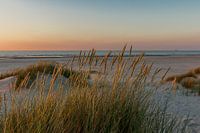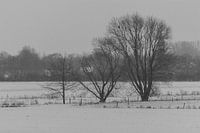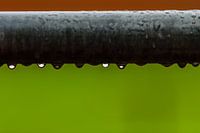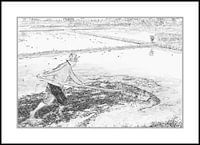Buy this digital art artwork Lobith by René Roos as a reproduction on canvas, ArtFrame, poster and wallpaper, printed on demand in high quality.
About "Lobith"
by René Roos
About the artwork
Lobith is a Dutch border town known as the point where the Rhine enters the Netherlands. However, in the 18th century [2] [source?] the course of the river was changed. This caused Lobith to be situated on a river fork, known as the Old Rhine. Near Lobith this created a nature reserve that is managed by the Dutch Forestry Commission: the Geuzenwaard. From then on the river crossed the Dutch border at the place where the village of Spijk was later created, and then flowed past Tolkamer. At Lobith in the Middle Ages toll was levied for ships, when the castle Tolhuys still existed. Lobith is part of the municipality Zevenaar in the province of Gelderland. Lobith belonged to the municipality of Rijnwaarden until 1 January 2018.
Lobith was created in the 13th century by the construction of the mighty castle Tolhuys on a higher bank of the Rhine. The Tolhuys owed its name to the toll. Ships had to moor in Lobith, which was then called Tolhuys, to pay toll. The castle no longer exists, it was destroyed in 1672 during the entry of the French army led by Louis XIV of France. This battle is known in French history as the Battle of Tolhuis. However, its history is still visible in the form of the Schipperspoort, the place where barges went ashore to pay toll in Lobith. Later the toll was moved to Tolkamer, which borders Lobith.
Much later Lobith was part of the Prussian municipality of Elten. On 1 March 1817 the area was transferred to the Netherlands, after which a provisional muni

About René Roos
Ik fotografeer al een aantal jaren, maar na het volgen van een aantal fotografie reizen onder begeleiding van professionele fotograven heb ik mijn fototoestel redelijk onder controle. Mijn stijl wil ik omschrijven als kleurrijk en het meest fotografeer ik natuur, landschappen en op reis... Read more…
 Netherlands
Netherlands Ordered in April 2025
Ordered in April 2025
 Netherlands
Netherlands Ordered in March 2024
Ordered in March 2024
 Germany
Germany Ordered in April 2023
Ordered in April 2023
 Germany
Germany Ordered in May 2022
Ordered in May 2022
 Germany
Germany Ordered in October 2021
Ordered in October 2021
 Germany
Germany Ordered in December 2019
Ordered in December 2019
 Germany
Germany Ordered in November 2020
Ordered in November 2020
 Netherlands
Netherlands Ordered in November 2021
Ordered in November 2021
 Germany
Germany Ordered in October 2020
Ordered in October 2020
 Netherlands
Netherlands Ordered in July 2023
Ordered in July 2023
 Netherlands
Netherlands Ordered in August 2021
Ordered in August 2021
 Germany
Germany Ordered in April 2021
Ordered in April 2021
About the material
ArtFrame™
Interchangeable Art Prints
- High-quality print
- Easily interchangeable
- Acoustic function
- Large sizes available
Discover the artworks of René Roos
 OmanRené Roos
OmanRené Roos Lonely treeRené Roos
Lonely treeRené Roos TheodelaRené Roos
TheodelaRené Roos PanameraRené Roos
PanameraRené Roos Yellow SkyRené Roos
Yellow SkyRené Roos Havana_New YorkRené Roos
Havana_New YorkRené Roos Beach on SchiermonnikoogRené Roos
Beach on SchiermonnikoogRené Roos Spring jittersRené Roos
Spring jittersRené Roos Winter 2019René Roos
Winter 2019René Roos UntitledRené Roos
UntitledRené Roos Without titleRené Roos
Without titleRené Roos Digital Art 30René Roos
Digital Art 30René Roos Without titleRené Roos
Without titleRené Roos Without titleRené Roos
Without titleRené Roos Digitalart64René Roos
Digitalart64René Roos Beach in TrinidadRené Roos
Beach in TrinidadRené Roos Along Klondike HighwayRené Roos
Along Klondike HighwayRené Roos Along the Alaska HighwayRené Roos
Along the Alaska HighwayRené Roos Brooklyn BridgeRené Roos
Brooklyn BridgeRené Roos Maasvlakte BeachRené Roos
Maasvlakte BeachRené Roos













 Church
Church Digital art
Digital art Meadow
Meadow Nostalgic Memories
Nostalgic Memories Serene Peace
Serene Peace Skyline
Skyline









